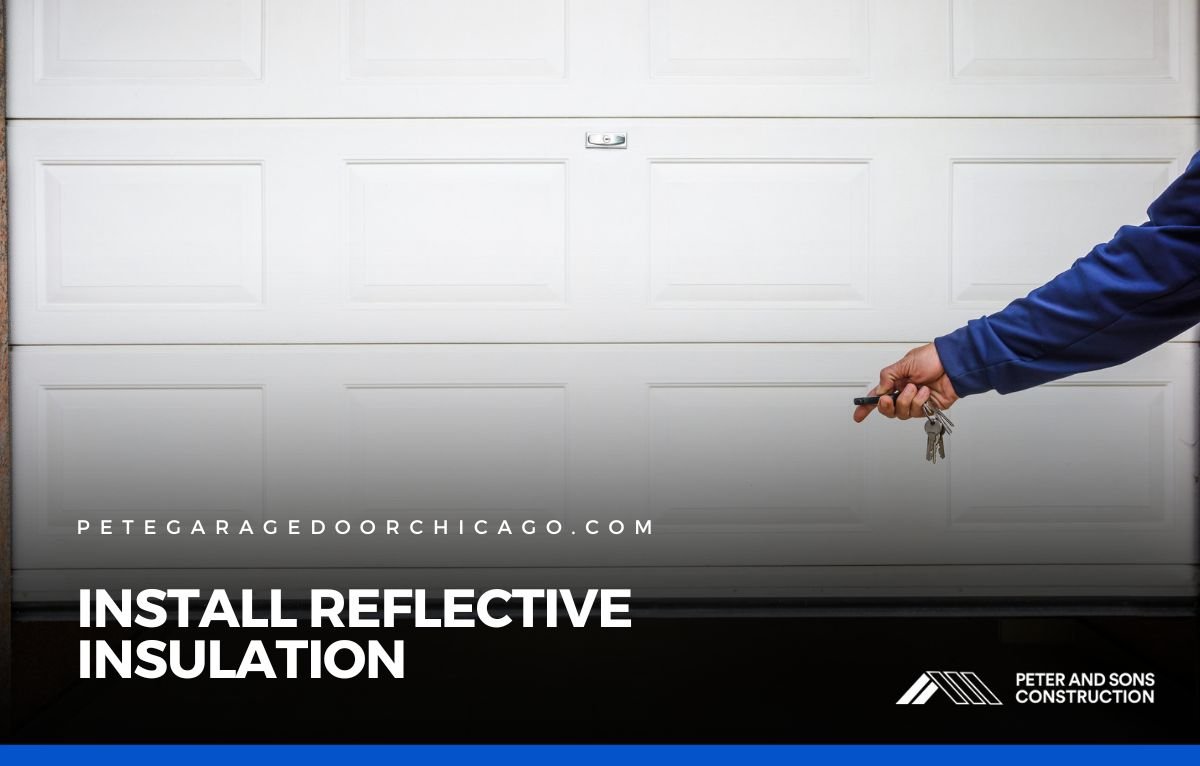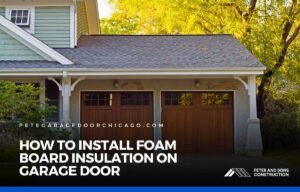How to Install Reflective Insulation on a Garage Door
- Editorial Team
- September 26, 2025
- 3:29 pm

If your garage feels like an oven during the summer, you’re not alone. Because garage doors are large, thin surfaces, they soak up the sun’s heat and transfer it indoors, making the space uncomfortable.
One effective solution is reflective insulation, a material designed to bounce radiant heat away instead of absorbing it.
Many homeowners want to know how to install reflective insulation on a garage door to make their garages cooler, more energy-efficient, and better protected.
The process is manageable with the right tools and preparation, but it’s also important to understand why reflective insulation works and how to avoid common mistakes.
Why Reflective Insulation Works
Unlike traditional foam or fiberglass insulation, reflective insulation uses aluminum foil surfaces to reflect radiant heat.
This means instead of trying to slow down heat transfer, it actively pushes it away. In a garage where the door faces direct sunlight, this can lower indoor temperatures significantly.
Reflective insulation also adds a lightweight barrier that doesn’t strain the garage door opener or add much bulk to the panels.
For homeowners curious about how to install reflective insulation on a garage door, the main attraction is comfort; the garage becomes cooler in summer and more consistent in temperature year-round.
Tools and Materials You’ll Need
Before getting started, gather the tools and supplies required for a smooth installation. Having the right items ensures accuracy and prevents mid-project interruptions. Commonly used tools include:
- Reflective insulation rolls or pre-cut panels
- Measuring tape for accurate panel sizing
- Utility knife or heavy-duty scissors for clean cuts
- Double-sided tape or adhesive strips
- Straightedge for guiding cuts
- Safety gear, including gloves and protective glasses
Some kits come with pre-measured panels that fit directly into garage door sections, which can save time. Preparing everything ahead of time allows you to focus fully on the installation itself.
How to Install Reflective Insulation on Garage Door: Step-by-Step
The process is straightforward, but accuracy matters for the best results. Start by cleaning the inside surface of your garage door.
Dust and grease can prevent the adhesive from sticking properly.
Next, measure each panel of the garage door and cut reflective insulation panels to size, leaving a slight overlap for better coverage.
Apply double-sided tape or adhesive strips along the panel edges, then press the insulation firmly into place, reflective side facing outward.
Work panel by panel until the entire door is covered. Finally, check that no gaps are left uncovered, as even small openings can let heat through and reduce effectiveness.
For pre-cut kits, the process is even simpler. The insulation pieces are designed to fit snugly into the panel recesses without adhesive.
You’ll just need to press them into place and make sure they’re secure. Either way, the goal is to create a continuous reflective barrier across the entire door.
Safety Precautions to Keep in Mind
When learning how to install reflective insulation on a garage door, safety should always be part of the plan. Make sure the garage door is closed and locked in place before starting to prevent movement.
If using a ladder, place it on stable ground and avoid leaning too far. Be cautious when cutting foil-backed insulation; it can be sharp along the edges.
Also, avoid blocking or interfering with the garage door’s moving parts, like hinges, rollers, or tracks. An incorrect installation could damage the door or affect its balance.
Benefits Beyond Cooling
Reflective insulation isn’t just about beating the heat. It offers additional advantages that improve comfort and protect your garage year-round:
- Temperature Control in Winter: While not as effective as foam insulation in cold climates, reflective insulation still reduces drafts and helps stabilize indoor temperatures.
- Energy Savings: By lowering the amount of heat transfer, it reduces the load on your home’s HVAC system, especially if the garage is attached to living spaces.
- Durability: The material resists moisture, mold, and pests, making it a long-lasting solution.
- Lightweight Design: It adds very little weight to the door, so it won’t strain your opener or springs.
- Improved Comfort: A garage that’s cooler in summer and less drafty in winter becomes more usable for storage, hobbies, or workouts.
These benefits highlight why reflective insulation is a popular choice for homeowners looking for both comfort and cost savings.
When to Call a Professional
While installing reflective insulation is manageable for many homeowners, not every situation is DIY-friendly.
If your garage door is older, damaged, or already unbalanced, adding insulation could worsen the problem. In those cases, it’s better to have a professional inspect the door before installation.
A technician can recommend the right type of insulation, ensure the door’s hardware is in good shape, and even install the insulation for you if needed.
This guarantees the project is done safely and effectively.
Stay Cooler with Reflective Insulation
Learning how to install reflective insulation on a garage door is a practical way to improve comfort in your garage, especially during hot summers.
By reflecting radiant heat, this type of insulation helps keep the garage cooler, reduces strain on your cooling system, and adds long-term durability.
With the right tools and careful installation, you can tackle the project yourself, or rely on professionals for a guaranteed fit.
If you’re in Niles, IL or the surrounding areas, Peter and Sons Constructions can help with garage door insulation, repairs, and upgrades.
Our team ensures your garage door performs its best while keeping your space comfortable year-round.



